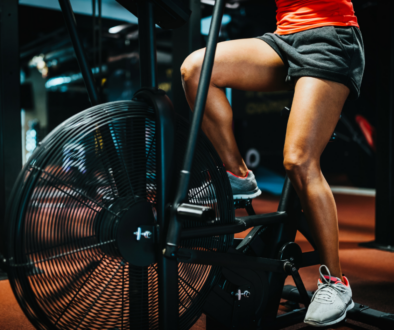What is Mobility?
What is Mobility?
Mobility is defined simply as the ability to move. When trainers and coaches talk about mobility, though, we have a more specific definition in mind: We mean the ability to safely and effectively move through exercises like squats, deadlifts, overhead presses, cleans, snatches, and more. We want to see proper alignment and movement patterns. This means that in a particular joint we are looking for stability, full range of motion, and no compensations elsewhere in the body.
In an overhead press, for example, do you have full range of motion in the shoulders, or are you compensating by excessively arching your lumbar spine or elevating your shoulders all the way up to your ears? Are your joints stable, wrists neutral, and elbows unlocked? If not, your trainer will tell you that you need to work on your shoulder mobility.
How Do You Improve Your Mobility?
Your mobility training program will include exercises, stretches, and myofascial release techniques geared toward building kinesthetic awareness and correcting dysfunctional movement patterns. The first step is always awareness. You cannot correct a problem if you are unaware that it exists. Your trainer will build your body awareness through exercises such as cat and cow (flexion and extension of the spine) so that you learn what a neutral spine feels like. In certain positions, a neutral spine may be compromised by tight muscles in other parts of the body, such as the hamstrings. If that’s the case, your trainer will teach you how to properly stretch the hamstrings and demonstrate how a lacrosse ball or a foam roller can be used to help relieve tension in those muscles. If you are unable to maintain a neutral spine because of a weak core, your trainer might recommend exercise such as planks to build core strength.
Mobility Training is Holistic:
A perfect example of this is the knees: Like many clients, you may have knee pain, not only during exercises or cardio but also throughout your normal daily routine. Rather than addressing the knees specifically, trainers and coaches know you need to work on opening the hips, stretching the calves, and strengthening the glutes with exercises such as bridges and deadlifts.
If back pain is your issue, trainers can help you alleviate upper back pain by showing you how to correctly stretch the chest and shoulders in addition to strengthening the upper back muscles. For the lower back, trainers will help you strengthen the core and glutes, and also stretch hip flexors, hamstrings, and shoulders.
Don’t wait until you have a problem, pain, or injury. Mobility training is preventative as well as corrective. If the body moves correctly through the demands you put on it in and out of the gym, you can reduce the risk of acute and overuse injuries.
More Specifics on Mobility:
Mobility training address issues of the soft tissues (muscles and connective tissues), joints, and motor function to reduce misalignments, muscular imbalances, and compensations in order to eliminate dysfunctional movement patterns.
There are three main components of mobility training are stretching, corrective exercises, and myofascial release.
- Stretching:
- Static Stretching: holding a stretch for 30+ seconds, usually post-workout.
- Dynamic: continuously moving in and out of a stretch, usually pre-workout.
- Assisted: joint distraction or traction with bands, or using sandbags, weights, or straps to maintain alignment, decrease compensations, and increase range of motion in a stretch.
- Passive: joint mobilization by a professional (certified personal trainer, physical therapist, massage therapist, Thai massage practitioner).
- Corrective Exercises: Often with bands
- Myofascial Release:
- Self-Myofascial Release (SMR) with foam roller, lacrosse ball, Thera-Cane or other tools.
- Soft tissue manipulation by a professional (physical therapist, massage therapist, Thai massage practitioner).
Benefits of Mobility Training Include:
- Improved daily function (feel better and have more energy all day long)
- Improved athletic performance (improve your run time and PR’s)
- Aides in recovery (which means more time spent working toward your goals)
- Decreased muscle pain and tension
- Reduced risk of overuse and acute injuries
Email me to find out how to include mobility training into your routine so you can reach your goals safer and faster.
Alicia Cross is a Certified Personal Trainer, Wellness Coach, and Yoga Instructor with more than 15 years’ experience working with clients in classes and one-on-one. She is a yogi, meditator, vegan, and lifter of heavy things. If you’re ready to discover the strength and peace that comes from within, email Alicia@AliciaCrossTraining.com.
Related Post:
6 Yoga Poses for Your Back VIDEOS



